A
Chemical
Exploration of My Morning
It’s
4:45 and my alarm is blaring. Time to
get up and get ready to go to school. I
suppose that I should make myself vaguely presentable.
So, I stumble to the shower, and the
unrecognized contribution of chemistry to my daily routine begins. Without the developments that are presented
below, I would be a smelly and greasy creature.
Not the most pleasant of pictures.
I have decided to examine the often overlooked chemicals that
are
present in my everyday routine. I didn’t
want to go out of my way to look for something; I wanted to show the
use of a
large variety of chemicals that I use in the space of one half-hour. And to be frank, the number of compounds
present in the seven or so products that I use without fail is
staggering.
We’ll begin in my shower.
The first step is shampoo; specifically
Biolage brand. The list of ingredients
begins with water, which we shall overlook, especially since it is
present in
nearly every product at which I looked.
The initial compound listed is sodium laureth sulfate, also
abbreviated
as SLS. Its chemical formula is CH3(CH2)10CH2(OCH2CH2)nOSO3Na (1). This is a
common detergent and surfactant,
and is also used as a foaming agent.
Surfactants contain both hydrophobic and hydrophilic ends; this
makes
them very useful compounds for cleaning.
The hydrophobic end attaches to grease and oil while the
hydrophilic end
is attracted to water. Thus, the grease
is just pulled away when the surfactant is rinsed off. It is a milder
version
of sodium lauryl sulfate, which is a detergent that is a bit too harsh
to use
for the cleansing of skin and hair. The
most interesting discovery about the SLS is the persistent rumors of
toxicity
and carcinogenic properties. These seem
to be mostly unfounded and completely blown out of proportion, given
that SLS
is used regularly and is not under any restricted use. Another
surfactant used
in this shampoo is coco-betaine, which works in a similar fashion as
SLS.
Many of the compounds seem to
perform the same purpose. These
repetitive ingredients include trimethylsilylamodimethicone,
polyquaternium-10,
laureth-5 carboxylic acid and PPG-5-ceteth-20 which are compounds for
which no
structure was available. Trimethylsilylamodimethicone is a branched
chain silicone
fluid that is deposited on hair as a thin film.
This allows for easier combing and less tangling and makes hair
feel
softer. The other ingredients also allow
for film formation and have moisturizing properties, and are compatible
with a
large variety of surfactants, which allows them to be used in a variety
of
personal cleansers. They also work as an
anti-static agent, which is appreciated after a morning of hat wearing. The PPG-5 ceteth-20 is also an emollient,
while laureth-5 carboxylic acid is also an emulsifier.
Cocamide
Mipa is used as a foam stabilizer, so all the nice lather that gets
built up
stays all bubbly. It is also a
thickening agent, keeping the shampoo from being too runny. Another thickening agent is PEG-55 propylene
glycol oleate.
Polypropylene
glycol (2) is a moisturizing ingredient.
Sodium benzoate (3) is used as a
preservative. It is an anti-microbial
agent that works best at lower pH values.
It specifically interferes with the ability of bacteria, yeasts,
and
molds to make energy. Another
preservative and anti-microbial is methylparaben (4), also known as methyl
4-hydroxybenzoate, with a formula of C8H8O3. This makes sense as both sodium benzoate and
methylparaben are derivatives of benzoic acid.
Butylparaben (5), ethylparaben (6), isobutylparaben (7), and
propylparaben (8) are additional ingredients that are also derivatives
of
benzoic acid, and therefore are used for a similar purpose as sodium
benzoate
and methylparaben. The propylparaben is
less water soluble than the methylparaben, which makes it a good
preservative
in a product that contains both oil and water.
Salicylic
acid (9) is used in shampoos because it is an exfoliant, removing dead
skin
cells and thereby preventing dandruff.
Some
compounds have been added simply to add fragrance to a product. Among these are hexyl cinnamal (10), coumarin
(11), linalool (12), hydroxycitronellal (13), and amyl cinnamal (14). These all lend a slightly sweet and slightly
spicy fragrance to the product.
Following
shampoo is conditioner; again, Biolage.
(I believe in product loyalty.) Because
this is from the same company, it contains many of the same compounds
that add
fragrance, such as coumarin, amyl cinnamal, and the others seen above. It also contains geraniol (15), however,
which is a flower-scented compound not added to the shampoo.
Cetearyl
alcohol (16) is a compound that is an emulsifier and emollient. It holds together the oily and the watery
portions of the conditioner. It also
thickens the formulation.
To
provide an anti-static factor, behentrimonium chloride (17) is added,
as is
cetrimonium chloride (18). These work by
making the hair slightly conductive. To
keep hair moisturized, glycerin (19) is one of the top ingredients. It is a humectant, so it attracts water,
thereby moisturizing both hair and skin.
Amodimethicone is a silicone fluid that behaves like
trimethylsilylamodimethicone seen in the shampoo above.
Trideceth-12 is an anti-build-up
component. It slightly weakens the
silicone additive (such as amodimethicone) to prevent them from
building up on
the hair shaft.
Chlorhexidine
dihydrochloride (20) is an anti-microbial agent.
Polysorbate-20
serves many purposes as an emulsifier, fragrance solubilizer and
stabilizer,
and lubricator.
Now
that the hair is supposedly soft and shiny, I move on to the soap,
specifically
Purity Made Simple by Philosophy.
Theoretically, this should contain compounds with similar duties
as the
shampoo compounds, since both have the purpose of cleansing.
Disodium
lauroamphodiacetate is a mild amphoteric surfactant.
It is easier on the hair and skin than many
cationic surfactants, so it helps to prevent irritation.
Coco-glucoside is a gentle surfactant,
anionic in nature, that is made from coconuts.
Yet another surfactant present in this soap is sodium trideceth
sulfate. Hexylene glycol (21) is a
germicidal
detergent.
PEG-120
methyl glucose dioleate is a thickener that can also act as a
moisturizer. It also reduces the
irritation that can be
caused by surfactants. Polysorbate-20
serves the same purpose as seen in the conditioner, as does glycerin. Carbomer is an emulsion stabilizer and a
thickening agent.
Triethanolamine
(22) is another emulsifying surfactant, a pH adjuster, a fragrance
ingredient,
and a thickening agent. It also contains
the microbial agents: methylparaben and
propylparaben. Imidazolidinyl urea (23)
is another microbial agent that is non-irritating.
So,
now I’m out of the shower and ready to moisturize, using a body lotion
also by
Philosophy. The first ingredient is a
multi-tasker. Isocetyl stearoyl stearate
acts as an emollient, moisturizer, and viscosity adjuster.
Glycerin is also an ingredient that moisturizes
as seen in the above products.
Dimethicone is a silicone that gives lotions a softer feel as
well as
acts as an emulsifier. Another
emulsifier is glyceryl stearate (24).
Cetearyl and cetyl alcohol act as emulsifiers, thickeners, and
emollients, much as they did in the conditioner. Polysorbate-60
is yet another emulsifier and
PEG-100 stearate is an emollient, moisturizer and emulsifier. Stearic acid (25) is used as a thickener and
emulsifier. It also gives a soft, smooth
texture to the lotion. Tocopheryl
acetate (26), also known as vitamin E acetate, is a vitamin that acts
as an
antioxidant and slows the appearance of aging.
Potassium ascorbyl tocopheryl phosphate increases the
antioxidant action
of vitamins C and E. Diazolidinyl urea
(27) is an antibacterial preservative.
Triethanolamine is also present in this lotion, more than likely
acting
as a fragrance ingredient and a thickening agent. Tetrasodium
EDTA (28) is a chelating agent
that reacts with salts within a formulation to prevent them from
bonding with
other ingredients as well as preventing microbial growth.
Once again, methylparaben and propylparaben
show up as antimicrobials.
Now,
I want to make sure that I don’t get smelly throughout my day. So I apply Secret brand deodorant. Cyclopentasiloxane is a silicone based
chemical that improves the efficacy of anti-perspirants, and lends to a
powdery
feel on application. Stearyl alcohol
(29) is also present and is an emollient, emulsifier, and thickening
agent. Dimethicone is also present and
gives the deodorant a softer feel. PPG-14
butyl ether is an anti-static agent (although I’m not quite sure of the
relevance of an anti-static agent in a deodorant).
Panthenyl triacetate is also known as vitamin
B. It is a skin moisturizer and an
anti-inflammatory. The other vitamin
present is vitamin E or tocopheryl acetate, which is an antioxidant. Behenyl alcohol (30) is used to thicken and
stabilize formulations. It also gives a
smooth feeling to emulsions. Finally,
the most important ingredient is the active ingredient of aluminum
zirconium
trichlorohydrex GLY which serves as an antiperspirant.
Next,
I have to put on some SPF lotion before I head out the door. Ethylhexyl methoxycinnamate (31) is the
sunblock that absorbs UV rays.
Ethylhexyl salicylate (32) is another sunblock that absorbs
certain UV
rays that is present in the lotion.
Benzophenone-3 (33) is another sunblock ingredient present in
the lotion
as is butyl methoxydibenzoylmethane. C12-15
alkyl benzoate prevents the lotion from feeling greasy, as does
cyclomethicone,
which is a silicone based compound.
Polypropylene glycol is a moisturizing ingredient.
Aluminum starch octenylsuccinate enhances the
SPF of the other ingredients. Cetyl
phosphate is a stabilizer. Ethylhexyl
palmitate ensures spreadability of the formulation.
Triethanolamine is a pH adjuster and an
emulsifying agent. The lotion also
contains glyceryl stearate and stearic acid play roles as seen above. Phenyl trimethicone is a silicone based
moisturizer and emollient that is water resistant.
Another silicone based emollient is cetyl
dimethicone. Panthenol (34), also known
as vitamin B5, acts as a moisturizer.
Phenylethyl alcohol (35) is a floral fragrance additive. Dimethicone copolyol is a silicone based
ingredient that adds elasticity to the product.
The lotion also contains a number of preservatives such as
phenoxyethanol (36), and the multiple parabens from the previous
formulas.
Last,
I put on some lip gloss to complete my routine.
The lip gloss has SPF 15, so it also contains ethylhexyl
methoxycinnamate. Another sunscreen and
emollient ingredient is
butyloctyl salicylate and butyl methoxydibenzoylmethane.
Octyldodecyl stearoyl stearate increases
viscosity and is a skin conditioner. Octyldodecanol
is another thickening agent and so is trihydroxystearin.
Polybutene and petrolatum are moisturizers,
while the polybutene also allows for waterproofing.
Therefore,
there are nearly 100 different chemicals (as well as a number that are
in
common throughout all of the products) that play a central role in the
half
hour before I walk out the door.
Structures:
(1)

(2)

(3)
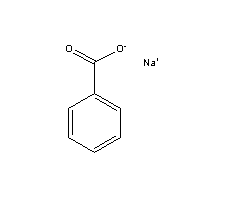
(4)
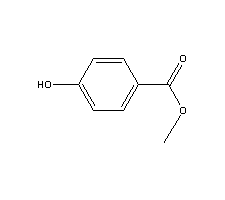
(5)
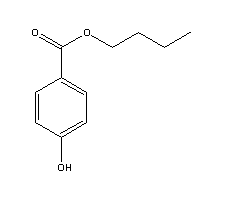
(6)
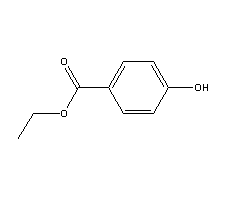
(7)
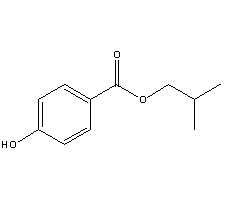
(8)
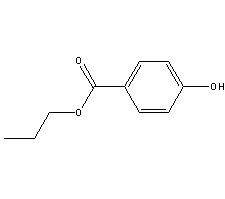
(9)
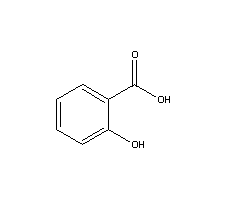
(10)

(11)
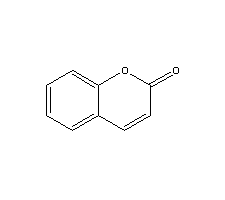
(12)
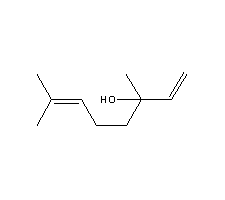
(13)
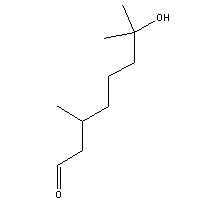
(14)
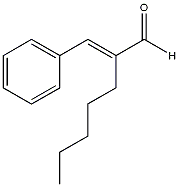
(15)
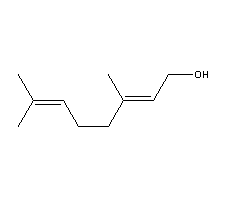
(16)

(17)

(18)
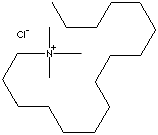
(19)
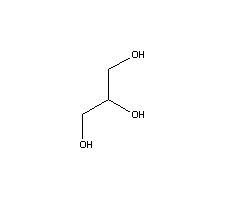
(20)
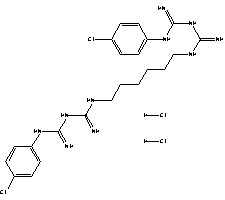
(21)
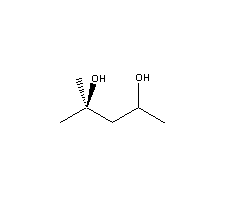
(22)
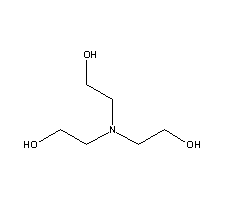
(23)
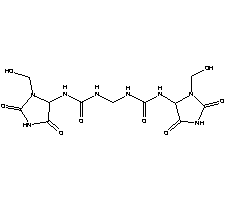
(24)

(25)
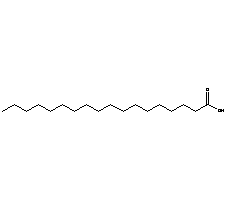
(26)
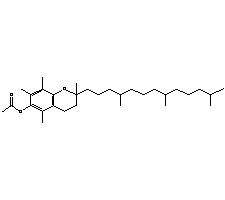
(27)
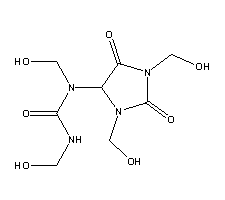
(28)
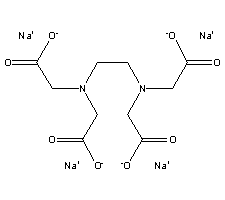
(29)

(30)
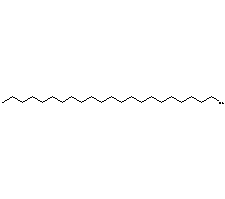
(31)

(32)
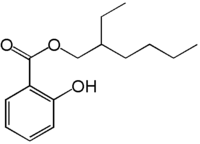
(33)
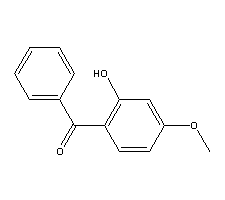
(34)

(35)
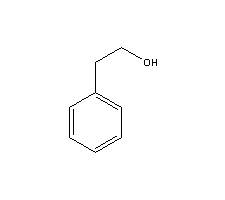
(36)
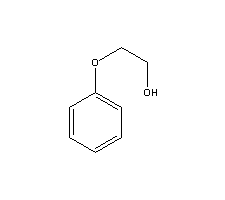
Sources:
http://www.checnet.org/HealtheHouse/chemicals/chemicals-detail.asp?Main_ID=285
http://www.cosmeticscop.com/learn/article.asp?PAGETYPE=ART&REFER=SKIN&ID=50
http://en.wikipedia.org/wiki/Sodium_laureth_sulfate
http://www.chemicalland21.com/specialtychem/perchem/SODIUM%20LAURETH%20SULFATE.htm
http://www.connock.co.uk/articles_silicones.htm
http://www.dow.com/ucc/amerchol/overview/con_poly.htm
http://answers.google.com/answers/threadview?id=137974
http://rtvanderbilt.com/No508.pdf
http://www.gina.antczak.btinternet.co.uk/CU/IP3.HTM
http://www.in-cosmetics.com/ExhibitorLibrary/6/Raw_Materials_Guide.pdf
http://www.fitzchem.com/cgi-bin/ft.cgi?24%7C99999%7CPersonal%20Care%7CSurfactants
http://www.in-cosmetics.com/ExhibitorLibrary/489/DegussaAG_CompanyBroschure.pdf
http://www.noveon.com/ProductBulletins/SodiumBenzoate%20ProductBulletin.pdf
http://www.made-in-china.com/products/show/premium/DM5NTM3N/jcxMzg3M/3/Chemicals_Inorganic_Salt_Sodium_Benzoate.html
http://en.wikipedia.org/wiki/Methylparaben
http://www.in-cosmetics.com/ExhibitorLibrary/234/UCARE_Polymers.pdf
http://en.wikipedia.org/wiki/Salicylic_acid
http://en.mimi.hu/beauty/propylparaben.html
http://www.iff.com/Ingredients.nsf/0/8A7C28F4050F32428025699300390223
http://www.aussiesoapsupplies.com.au/jude/surfactantbasics.htm
http://www.menessentials.com/oxid.php/sid/x/shp/oxbaseshop/cl/info/tpl/alcohol.tpl
http://www.cosmeticscop.com/learn/dictionary.asp?TYPE=SEARCH&ID=B
http://www.pioneerthinking.com/glycerin.html
http://sci-toys.com/ingredients/cetrimonium_chloride.html
http://answers.google.com/answers/main?cmd=threadview&id=148053
http://www.naturebath.com/polysorbate_20.html
http://answers.google.com/answers/threadview?id=137974
http://www.theorganicpharmacy.com/about_ingredients.php?ingredientID=156
http://www.h2e-online.org/pubs/chemmin/surgical.pdf
http://www.dermaxime.com/carbomer.htm
http://www.dermaxime.com/triethanolamine.htm
http://en.mimi.hu/beauty/imidazolidinyl_urea.html
http://www.gina.antczak.btinternet.co.uk/CU/II-K.HTM
http://sci-toys.com/ingredients/dimethicone.html
http://www.webvitamins.com/Nutrient.aspx?id=691
http://www.trinature.com/glossary/gbody.jsp?ingredientID=71
http://www.skinexpert.net/conditions/allergens/c_Diazolidinyl-Urea.htm
http://www.connock.co.uk/products_silicones.htm
http://www.naturalhealthland.com/pdfs/ingredients.pdf
http://finetexinc.com/FINSOLV%20TPP.html
http://en.mimi.hu/beauty/cyclomethicone.html
http://www.totalblock.com/popup.htm




































